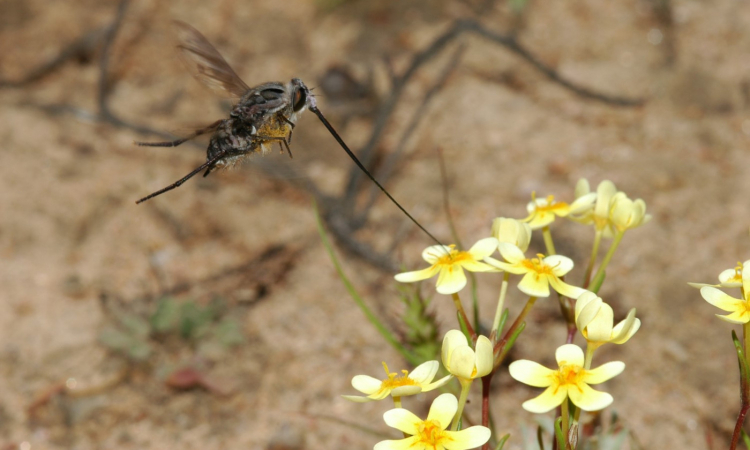A keen eye and a passionate spirit can lead to amazing new discoveries. We studied these key pollinators, that have been much overlooked and were finally able to give it its very own name. These two long-tongued fly species can now be protected and appreciated on their own merits for the role they play in pollinating our beautiful Namaqualand flora.
Our story of the discovery of a brand-new species to science starts with a scientist looking for something else entirely. A French Botanist, Florent Grenier, fell in love with Namaqualand as a child and was determined to come back as a young PhD student to explore its natural wonders. Florent decided to focus on the diverse plant life that is pollinated by long-tongued flies for only a brief, few months of the year during spring. He watched them day in and day out and soon realised that not all were created equally. By taking tongue and body measurements of all the flies he had caught providing valuable pollination services to the plants, it became clear that there were at least two if not three different species currently under one name.
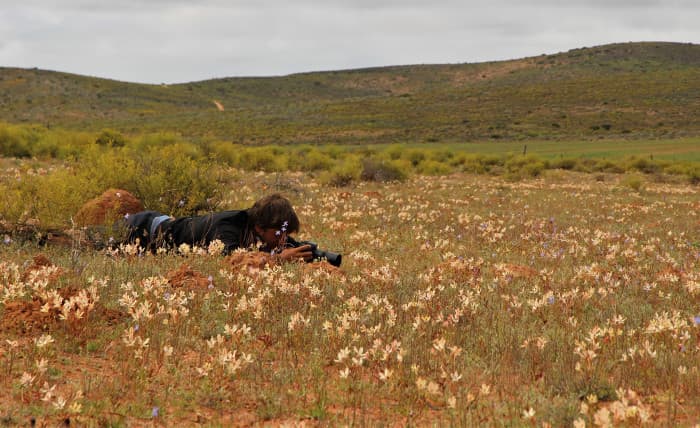
Florent Grenier lying in a field of Lapeirousia fabricii waiting for long-tongued flies in Namaqualand ~ Photo by Florent Grenier
This name was Prosoeca peringueyi, a well-known species among pollination biologist for its particularly long tongue and pollination prowess. It belongs to the Nemestrinidae family of true flies (Diptera), a family of flies best known for being fantastic pollinators. Prosoeca peringueyi is a rather promiscuous fly when it comes to its plant partners and was reported by Peter Goldblatt and John Manning to visit at least 28 different plant species in the Namaqualand area. Florent found this number to be much higher. Many of these plant species are completely dependent on Prosoeca peringueyi for their pollination in order to produce seeds for the next generation.
Being a plant specialist, Florent handed over his precious Prosoeca peringueyi collection to me with all the information about what he had observed in his many months in the field. I rushed to the lab to see if we could find any genetic differences between the specimens. We were overjoyed when the molecular results confirmed our suspicions that there were two clear genetic groups, supported by two gene regions. The next step was to confirm that our molecular results were confirmed by morphological characters that could be used for the description of a new species. As most of the characters are microscopic, it took a while for me to see what made these flies different.

Prosoeca torquata about to visit Lapeirousia dolomitica ~ Photo by Florent Grenier
However, once I had observed them in more detail, it was clear to me that we were dealing with a shiny new species to be described. The characters that set these two species apart were indeed the tongue length of the one being consistently shorter than the other, but more importantly it was always shorter in proportion to its body length. Most organisms have some degree of variation to their body size but features often grow relative to one another, making proportions a far more reliable way to distinguish species. We also found consistent differences in the wing veins and some prominent hair traits. Most importantly, as far as many entomologists are concerned, we found differences in the male genitalia, which reinforced our discovery.
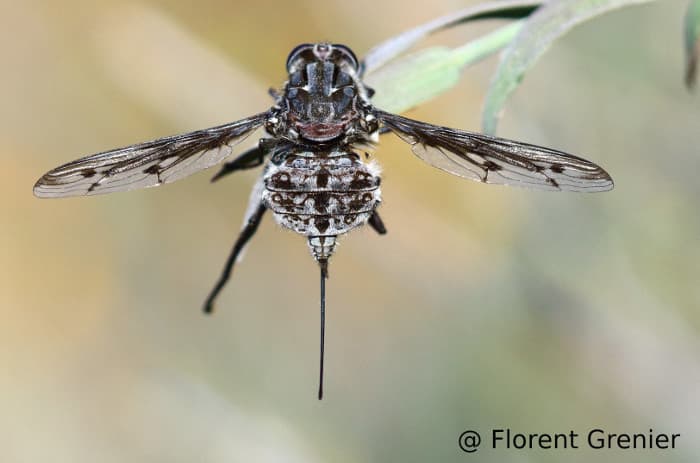
Prosoeca peringueyi at rest in the field ~ Photo by Florent Grenier
The knowledge that two very closely related Prosoeca species occur together in many of the same populations raises new questions to be answered. Such as: to what extent do these two fly species visit the same or different plant species? If they visit the same plant species, their joint visitation may act as a buffer for pollination services in case one of the two species goes extinct. If, however, they visit different plant species, then what stops them from visiting the plants of the other?
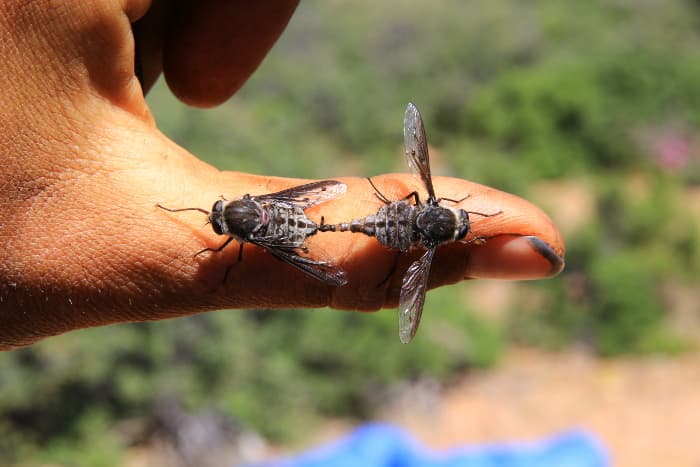
Male and female Prosoeca torquata mating ~ Photo by Florent Grenier
The formal description of the new species, Prosoeca torquata, means that conservation agencies can take it into consideration when developing areas of conservation priority. Without a name it is impossible to put valuable research, such as on the pollination importance of these flies and the plant species they visit, to good use for conservation. Therefore, for understanding these wonderful flies, their ecology, and the plants that they pollinate, this was really a first vital step. Our study also demonstrates that new species are still awaiting discovery, even from areas that are frequented by naturalists.
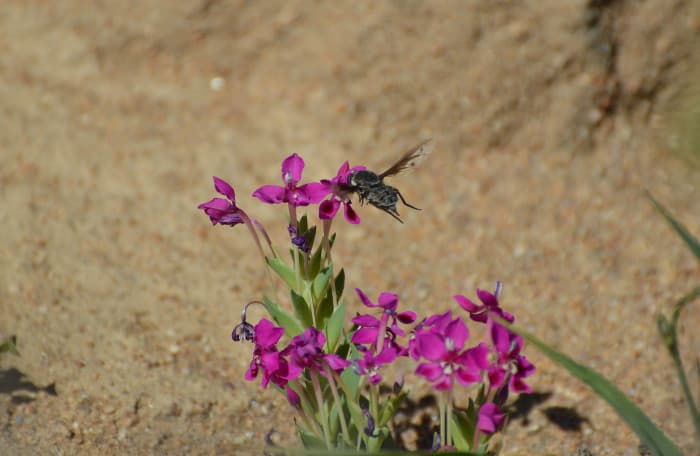
Prosoeca torquata visiting Lapeirousia silenoides ~ Photo by Timotheus van der Niet
Author information
Genevieve Theron is a PhD student at UKZN that is working on the evolution of the Nemestrinidae of South Africa.
Timotheus van der Niet is a lecturer at UKZN with a focus on the evolution of plants and their pollinators.
Timotheus van der Niet is a lecturer at UKZN with a focus on the evolution of plants and their pollinators.
Shop for a cause
Conservation Mag is an Amazon affiliate, by clicking on the links to do your shopping you support us without paying anything extra.
Shop on amazon.com | amazon.co.uk
Shop on amazon.com | amazon.co.uk

